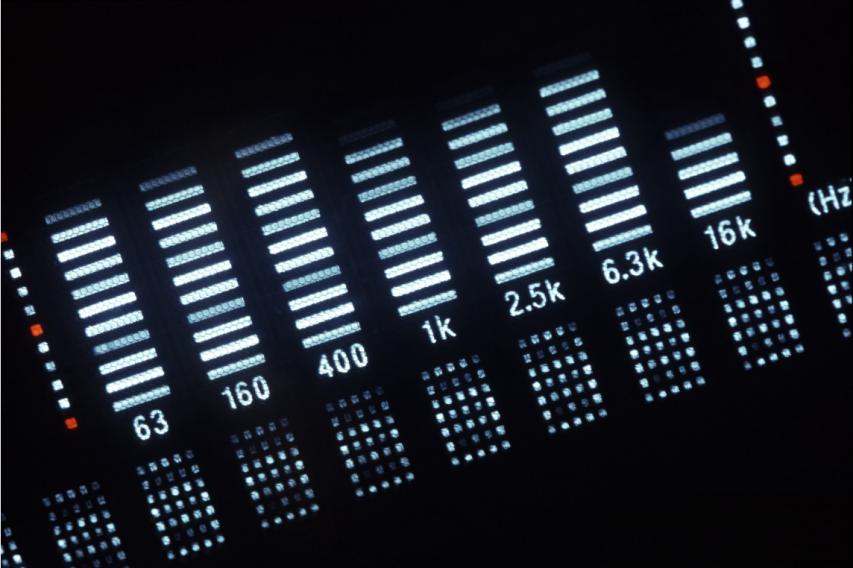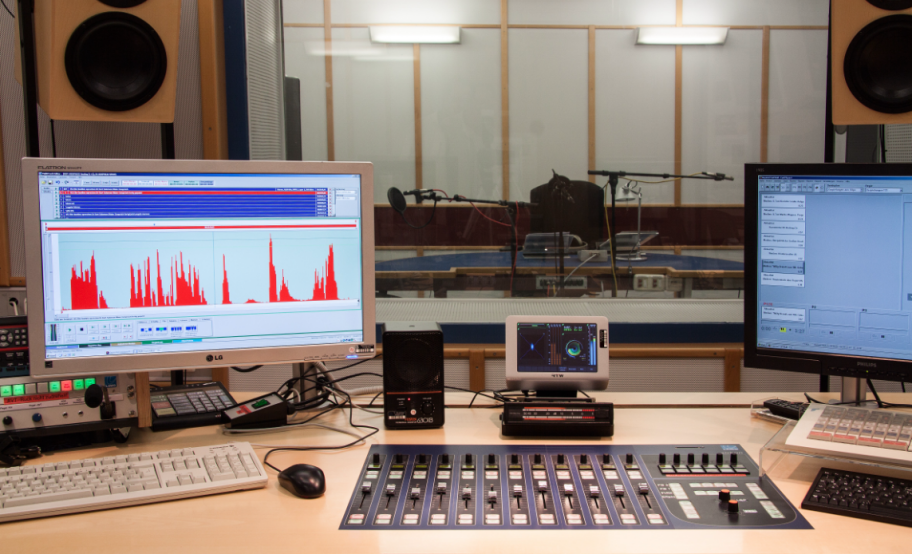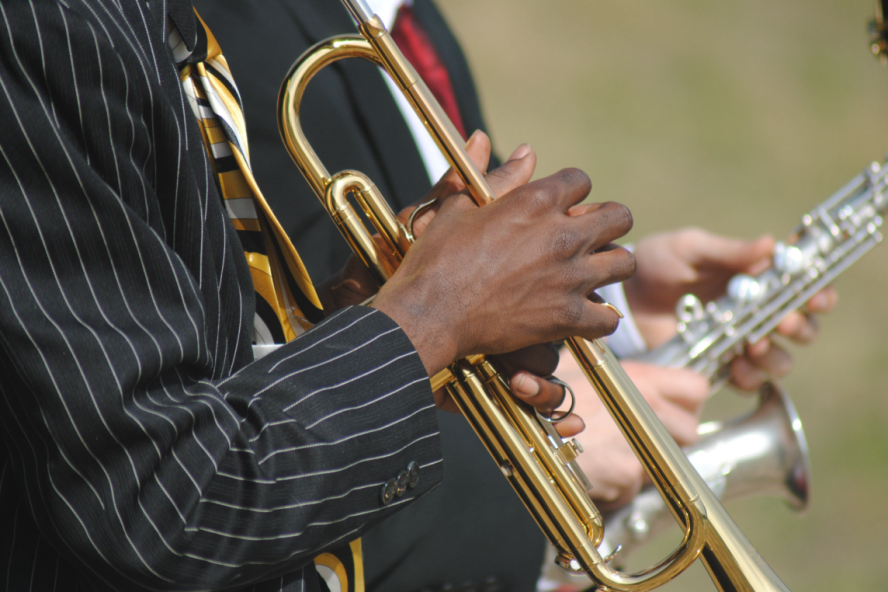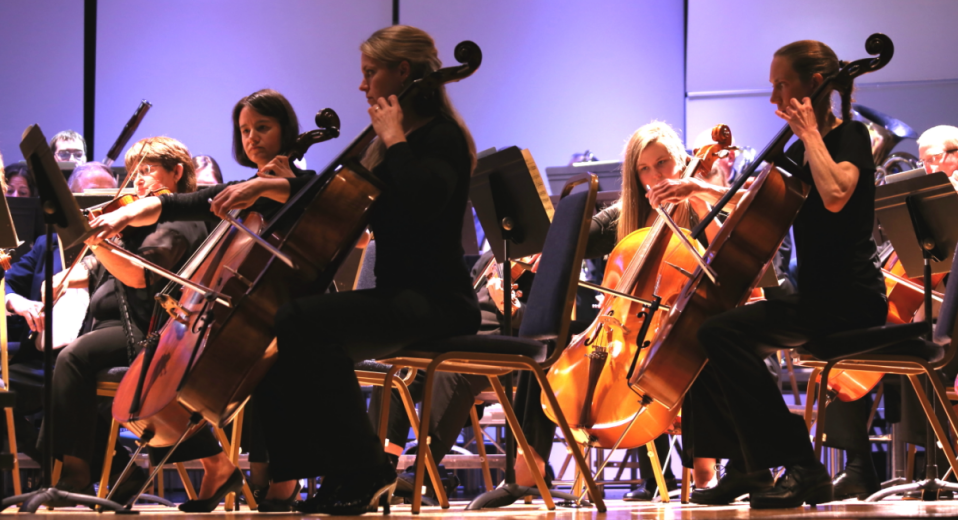Your personal music search space.
Augment your understanding of music.

______________________________________________________________________________

YMUSIC SEARCH ENGINE
WHY MUSIC? QUALITY ESSAYS ON MUSIC LISTENING FOR AVID READERS

AN EAR FOR HEARING, AN EAR FOR LISTENING: WHEN ARE WE REALLY LISTENING TO MUSIC?
Characteristics of hearing and listening
Once, musician Pauline Oliveros and two of her friends played and recorded a piece of music with traditional musical instruments in a water tank. They wanted to experience sounds in such an unusual place, an experience rarely done. The result was of course surprising, reminiscent of siren songs, and after the end of the piece, the musicians had the chance to hear 45 seconds of a reverberation that evoked the birth of the Universe. Somehow, the tank was playing with the musicians, who were respecting the sound, practicing deep listening.
The ear alone hears: hearing is a process involving physical perceptions; the brain listens: listening is paying attention to sonic perceptions. Music listening may be a longlife learning process enhanced by frequent contact with sounds. It is an individual process, even if general principles regulate the way specialists talk about sounds. That is why it is easier to measure hearing than listening. Anyhow, music listening contributes to the cultivation of what Oliveros called the musical mind.
A meditation on listening
Between the different forms of listening, deep listening is the one which tries to detect acoustic spaces, those spaces where space and time merge, articulated by sound. It is an unusual way of understanding, a meditation on listening. It is a process linked to the life story of a single person: people are listening according to their memories, their experience, their openness, etc.
Deep listening is filling a head with sounds. It requires stillness. It does not require any musical training. Active listening, which is defined by the fact of paying more attention to other people, is a part of deep listening. Deep listening is different from global listening. Practicing global listening or inclusive listening is trying to capture the texture and the density of sounds, not their details. It is opening oneself to the entire field of sounds with the whole mind. In contrast, exclusive listening is focusing on one source of sound and excluding the others.
Deep listening is even more significant than global listening, notably because it includes the body: deep listening is about listening with the arms or the feet, making movements with the body to listen to the result. It is a way of directing attention. The deep listener can even perceive the high frequencies emitted from lights.
As music starts from listening, practicing deep listening is a way to enjoy music more and more, because there is a whole universe in a single musical tone. Listening to one tone deeply, examining one solitary note, listeners may determine more precisely how they feel about that tone and they may sing it more easily. Deep listening allows the enjoyment of timbre, which may be defined as the perceived sound quality of a musical note.
Do you want to try deep listening yourself and feel the beauty of each sound? Try YMusic, your free personal assistant (it includes musical criteria to select music), and direct your attention!

Do you want to exercise your ears naturally to perceive distinct streams of sound intertwined in pieces of music? Try YMusic, your free personal assistant (it includes musical criteria to select music), and get the most out of your ears!
HOW DO SOUND ENGINEERS LISTEN TO MUSIC?
Right sound, left sound
In their daily world, sound engineers try to multiply means to grab music listeners. Sound compression, which is reducing the dynamic range in a piece of music and which solves a certain number of technical problems, is a highly appreciated solution.
However it is not the only one. To listen in a critical way, sound engineers must be attentive to each element of a piece of music because each of them has a specificity. Also, a very basic task they must fulfill is to distinguish which sounds, in stereophonic systems, come from the left, and which ones come from the right. That distinction between right and left in recording technologies is coming from human ears themselves: human beings perceive two distinct streams of sound simultaneously and in order to discern where a sound is coming from, they sense level and timing differences between the two.
Sound engineer Alan Blumlein created one of the first stereophonic systems able to reproduce this operating mode: he filed a patent in 1931 for a device that used two microphones arranged in such a way that one would hear a right sound pole and the other one a left pole.
Now, even if stereophonic devices are sophisticated, the best sound engineers always try to keep the richness of the first audio system, which was mono: an engineer may record two guitars in mono and mix them in a stereo system to get a more compelling result.
Listening in an objective manner
Over time, each sound engineer finds a personal method of producing great results. As not everything works, how can engineers develop their aptitude to listen to their own material in an objective way and reach their targets? They train themselves to listen to material they wrote themselves as if it were the first time they were listening to it. In doing so, engineers are learning to listen as if they were members of their audiences. Also, they may sometimes work with their friends by having them listen to music they did not compose themselves, observing their reactions: are they smiling, moving their feet?
At times, sound engineers do not necessarily listen to their compositions over and over: they leave some distance. In particular, they take a break at the end of record projects, before mixing, which is the process of merging individual tracks in a single recording to get the piece of music as satisfying as possible. However, waiting for a long period is not always possible.
Sound engineers, joining the profession, may have mentors who help them to fix specific issues in terms of music listening. Every now and then, it appears that when engineers listen more attentively to their work, the problem disappears automatically. So, even if sometimes they must maintain a distance from their tracks, at other times they must listen to them again and again. As in every activity, it is also about knowing oneself.

Do you want to calibrate your ears and evaluate which kinds of frequencies and timbres you like the most? Try YMusic, your free personal assistant (it includes musical criteria to select music), and have fun with sounds!
WHAT DO SOUND ENGINEERS DO FOR MUSIC LISTENERS?
Sound engineering, at the crossroads of frequency and timbre
As you might imagine, one main target of music producers is to establish communication with music listeners via recordings that have such a depth and a breath that they somehow disappear, allowing listeners to be engaged by broad soundscapes. For music producers, the angle is music itself, followed by technology: how will musical elements combine with each other to tell a story? Technology assists music, not the contrary, and it is true especially for listeners: it even may impede their enjoyment of music (as an aside, we may remark that a sound engineer said that listening using headphones is not that much comfortable and fun even if headphones are useful in some environments).
Sound engineers work at different levels. There is the work on songs themselves, with their structures: harmonies, chords, rhythms, and melodies; and there is sound itself: how does a specific note sound at a certain moment of the melody? The challenge for engineers is thus to master both the big picture of a piece of music and its specific details. At the level of the sound, engineers must resolve questions like: ‘What do I have to do when vocals are drowned out by guitars?’, as each element must fit into a whole. To resolve them, they may play with frequencies, putting them up or down and checking the whole effect again. In the work of music engineers, the study of relationships between frequency and the characteristics of timbre is essential. Is a sound high or low? Is it shrill or soothing? To answer, they put each sound in a context, whatever it is visual (for example in movies) or not.
What do listeners do to appreciate the work of sound engineers?
Music listeners, confronted with most music, which is refined through sound engineering, calibrate their ears to the music itself and to their environment, as sound is not produced in a vacuum. In fact, the ear-brain connection is changing from one day to the next, and the perception of music listeners may be different each time they listen to the same piece of music. Music listeners may take benchmarks and make comparisons so that they know, after several listenings, where each musical element is, in order to enjoy it more.
Sound engineers attest that a significant number of contemporary music listeners who love electronic music prefer louder sounds. It explains why a lot of music producers utilize compression: compression lets them squash higher notes and reduces the gap between louder and softer passages. That kind of process is good as long as the music producer is bearing in mind his musical intent. However, too much squashing leads to the loss of the dynamic range, which is one of the elements that grabs the listener (and is strongly present in classical music for instance).

Do you want to assign meanings to music according to your own systems of references? Try YMusic, your free personal assistant (it includes musical criteria to select music), and shape your music listening experience!
DOES MUSIC INFLUENCE HUMAN BEINGS?
How pieces of music are sorted out as if they were pebbles
For several decades, music has been everywhere: in escalators, in hotels, etc. It is so true that a lot of people tend to forget that music has always been produced sparingly: music once used to be rare, due to the absence of recordings and also to the fact that a lot of people could not afford to go to concerts. For example during the life of Beethoven, who could claim to listen to the Ninth Symphony in its entirety?
Today, music listeners not only have access to lots of music but can choose between different performers and orchestras, skipping parts of the music and comparing performances. In doing so, do listeners miss the point? Selection has always existed when it comes to music. It was imposed at the social level. For instance, in ancient Greece, soldiers were forbidden to listen to certain modes of music because they were seen as sensuous and incompatible with the nature of military training, while others were conceived as good and character building.
This way of sorting music like pebbles is an indication that music is seen as powerful. Music has an influence on human beings. It is so true that during centuries, the tritone (an interval composed of three whole tones) was prohibited, considered to be unhealthy, and, until 1900, the tritone was not used by composers. During the first part of the 20th Century, jazz was labelled ‘non fit for decent company’. In Nazi Germany, many composers were said to be degenerate and banned. Nowadays, some dictatorships say that Western music is morally corrupting. This is proof that music is conveying messages to its audiences.
How do musicians and audiences assign meaning to music together?
Music listeners may attribute a sense to a piece of music by association; music genres and musical instruments may evoke a time, a place, or a situation: salsa is linked to South America as the didgeridoo is to Australia and organs to are places of worship; ragtime is strongly connected to the singular period named the Roaring Twenties; the harp is a cosmic or a political symbol.
Also, through music, both music composers and music listeners may change their relationship to time. It is shown in movies, where music may notably signal an incursion of the past into the present or a move from one time frame to another. That type of incursion helps the listener to experience time as it is experienced in inner life, where an hour can last a minute and a minute can last an hour, far away from chronological time.
Music conductors share their perception of musical meaning using their baton, their hands, their eyes, and sometimes their feet: upward movements indicate optimism or hope, downward motions reflect sadness, death, etc. Through dozens of movements, conductors are shaping a piece of music, communicating with ensembles and orchestras. In any case, we see that music performance and music listening rely on social elements and codes that are binary and are not peculiar to the field of music: oppositions like up and down or past and future are very common in all fields of human thought.
Interested in exploring music at home and enhancing your inner musical experience ? Try YMusic, your free personal assistant (it includes musical criteria to select music), and center your music listening on your perception of sound!

WHAT RELATIONSHIPS DO MUSIC LISTENERS HAVE WITH MUSIC PERFORMERS?
Amongst specialists, it is usual to talk about a ‘composer – performer - listener’ chain of dialog. But does music production remain a linear process, now that online music occupies a key place in the music market? The expansion of the internet has affected both performance and listening practices. Yet live music venues are more popular than ever and attract lots of listeners.
Musical expression in time and space
In the usual situation of a live venue, performers achieve musical gestures. They move their bodies in an expressive way. Some of their movements are purely technical, other ones are not. Also, performers must at times coordinate simultaneous movements. They show dexterity, especially as they must take into account the movements of the other performers. The whole generally gives an impression of beauty and grace. That extra-musical behavior explains why witnessing a musical performance remains for music listeners a special moment, where the visual aspect of the musical communication links musicians and listeners in a unique way.
A music researcher explained that, actually, the performer is producing a sound and a movement that the listener is perceiving as a gesture. For that researcher, François Delalande, the listener is going through three stages: exploration (the listener is discovering and acquiring new sounds), expression (the listener is making associations between various aspects of sounds and specific gestures) and organization (the listener is developing expectations regarding music). Whether the music performer is present or not, these three stages may happen.
Modalities of musical communication: will, can, know and must
Musicologist Eero Tarasti, following the Hegelian logic of Being, says that the actions of music performers may relate to four main poles: will, can, know, and must. The ‘will’ pole is linked to the inner self, the personal history, the tastes and the musicality of performers. In one word, performers’ ‘will’ is their charisma. The ‘can’ is related to the skills of performers, including sound quality and virtuosity. The ‘know’ is in touch with elements like the tradition which influences the performance, that tradition generally coming from a specific school of music. Finally the ‘must’ leads performers to examine the immanent intentions composers put in their scores.
All these elements form the musical competence of the performers on the basis of which music listeners may produce musical meaning by and for themselves. Listeners may even let the music speak to their soul, transcending the limitations of their rational mind. An effective music performance, during which the performers are giving the best of themselves, may lead listeners to have such an experience. At the simplest level, the music listener experiences pleasure which is the enjoyment of the sound itself, as it is arranged. It is evident that when music listeners enjoy music at home, they are totally centered on music and themselves. Music streaming platforms appeal to the listeners’ sense of self-presence and their wish for inner and active music listening experience. At home, the music listener may live less intellectual and less social approaches to the musical phenomenon. In the framework of outdoor festivals, intellectual views on music diminish too, but the role of sociality is significant.
WHAT RELATIONSHIPS DO MUSIC LISTENERS HAVE WITH MUSIC PERFORMERS?
Know more about what music listening implies, at the crossroads of hypotheses, opinions and practices
INTRODUCTION TO MUSIC LISTENING